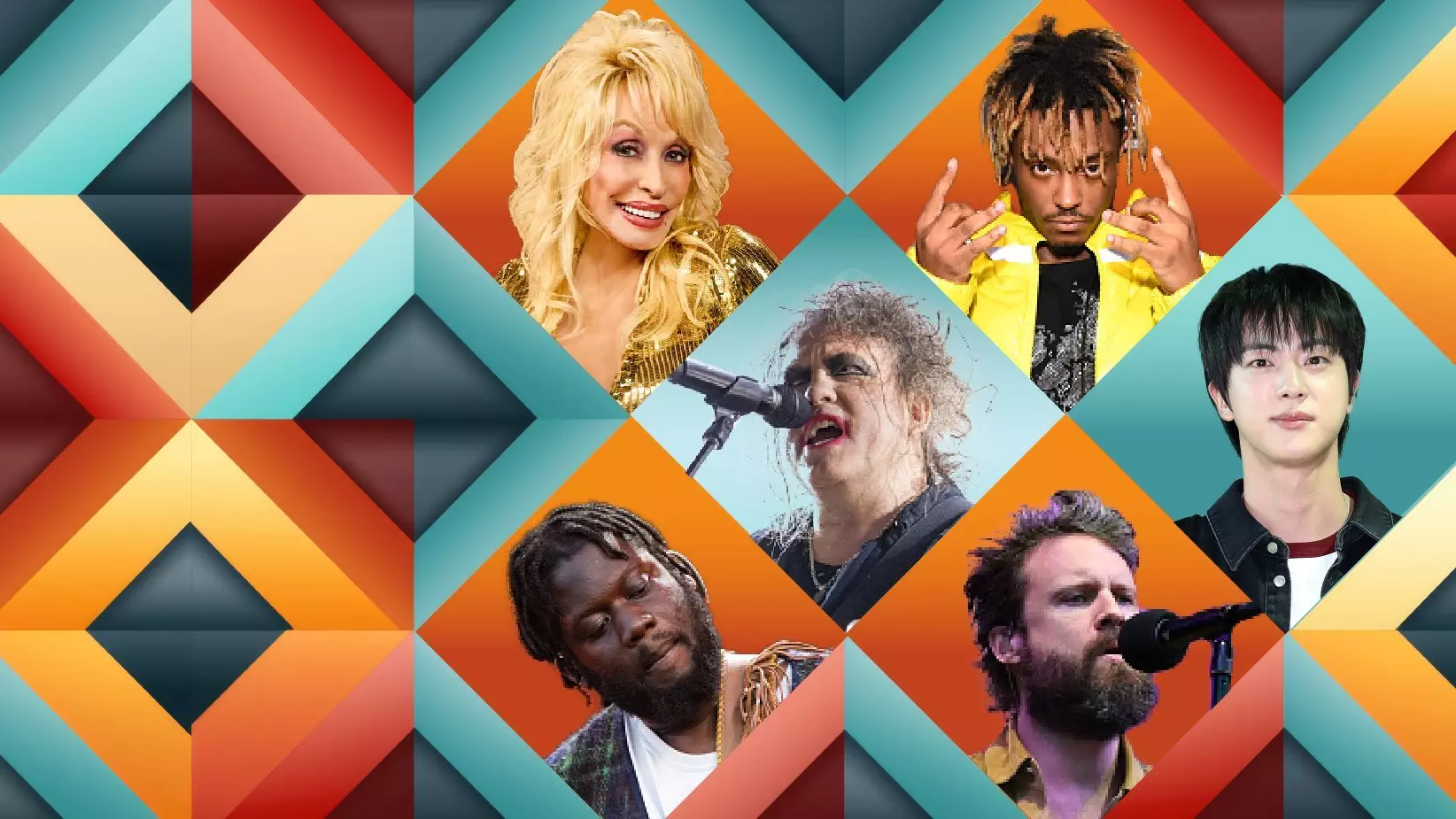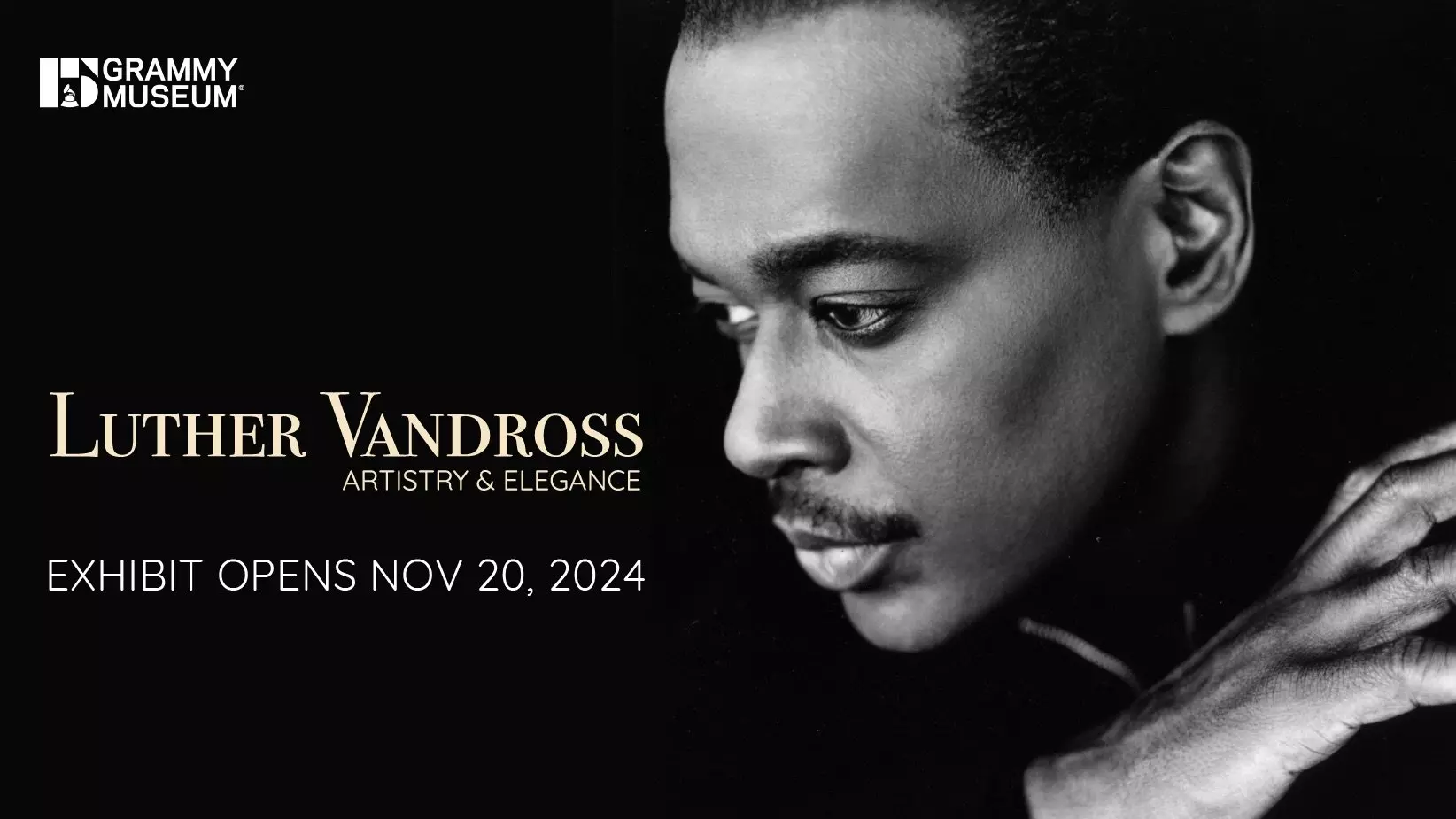Photo: Lynn Goldsmith/Corbis/VCG/Getty Images

Chic circa 1981
news
Library Of Congress Adds Recordings By Chic, Tony Bennett, Fleetwood Mac
From '80s pop and rap to classical, disco, Motown, and American songbook classics, the rhythms behind the National Recording Registry's additions for 2017 are gonna get you
Tony Bennett's "I Left My Heart In San Francisco," Kenny Rogers' "The Gambler" and Fleetwood Mac's Rumours. What do these recording have in common? Not only have each of them won GRAMMY Awards, they now share the honor of having been added to the Library of Congress' venerable National Recording Registry.
<iframe width="620" height="349" src="https://www.youtube.com/embed/r6DUwMnDxEs" frameborder="0" allow="autoplay; encrypted-media" allowfullscreen></iframe>
Today, Librarian of Congress Carla Hayden announced the addition of these and 22 other recordings to the registry catalog for the 2017 calendar year.
Additional GRAMMY winners with recordings newly added include Gloria Estefan and the Miami Sound Machine's 1987 upbeat jam, "Rhythm Is Gonna Get You"; Yo-Yo Ma's exquisite 1996 classical LP, Yo-Yo Ma Premieres: Concertos For Violoncello And Orchestra, Kenny Loggins' huge 1984 film soundtrack smash, "Footloose"; and Chic and Nile Rodgers' timeless 1978 disco workout, "Le Freak."
Run-DMC's groundbreaking 1986 album, Raising Hell, was added. The LP spawned the rock-rap crossover hit "Walk This Way," which was inducted into the GRAMMY Hall Of Fame in 2014.
Speaking of the Hall, other newly added National Recording Registry recordings that have been previously inducted into the GRAMMY Hall Of Fame include the soundtrack to The Sound Of Music (inducted 1998), Mississippi Sheiks' "Sittin' On Top Of The World" (2008), Bill Haley And The Comets' "Rock Around The Clock" (1982), the Ink Spots' "If I Didn't Care" (1987), Harry Belafonte's Calypso (2015), and the Temptations' "My Girl" (1998).
Similar to the GRAMMY Hall Of Fame's mission, the National Recording Registry is designed to champion and preserve recordings of historical significance.
Nominations are gathered via online submissions from the public and from the NRPB, which is comprised of leaders in the fields of music, recorded sound and preservation. See the National Recording Registry's full list — if you have a recording you deem worthy of adding to the registry, make your submission.
"This annual celebration of recorded sound reminds us of our varied and remarkable American experience," said Hayden. "The unique trinity of historic, cultural and aesthetic significance reflected in the National Recording Registry each year is an opportunity for reflection on landmark moments, diverse cultures and shared memories — all reflected in our recorded soundscape."

Photo: Dimitrios Kambouris/Getty Images for The Latin Recording Academy
photo
2024 Latin GRAMMYs Red Carpet Photos: See Head-Turning Looks From Anitta, Maria Becerra, Gloria Estefan, Becky G, Juanes & More
The 2024 Latin GRAMMYs kicked off tonight, Thursday, Nov. 14, in Miami. See some of the hottest, fashion-forward looks at the 2024 Latin GRAMMYs red carpet from Ela Taubert, Alok, Bizarrap, Eladio Carrión, and many more.
The 2024 Latin GRAMMYs are officially here and so is the stunning red carpet fashion.
The 2024 Latin GRAMMYs, officially known as the 25th Latin GRAMMY Awards, take place tonight, Thursday, Nov. 14, and will air live beginning at 8 p.m. ET/PT (7 p.m. CT). A one-hour pre-show, preceding the 2024 Latin GRAMMYs telecast, starts at 7 p.m. ET/PT. Ahead of the telecast, nominated singers, musicians, producers, and others made appearances on the red carpet — with outfits that displayed as much creativity and distinction as their musical output.
Read More: How To Watch The 2024 Latin GRAMMYs Live: Full Performers Lineup, Nominations, Air Date, Time & More
Below, see some of our favorite looks from the 2024 Latin GRAMMYs red carpet at the Kaseya Center in Miami.
Check out the full winners and nominations list for the 2024 Latin GRAMMYs.
Anitta attends the 2024 Latin GRAMMYs at Kaseya Center on November 14 in Miami, Florida | Photo: Dimitrios Kambouris/Getty Images for The Latin Recording Academy
Maria Becerra attends the 2024 Latin GRAMMYs at Kaseya Center on November 14 in Miami, Florida | Photo: Rodrigo Varela/Getty Images for The Latin Recording Academy
(L-R) Emilio Estefan and Gloria Estefan attend the 22024 Latin GRAMMYs at Kaseya Center on November 14 in Miami, Florida | Photo: Rodrigo Varela/Getty Images for The Latin Recording Academy
Becky G attends the 2024 Latin GRAMMYs at Kaseya Center on November 14 in Miami, Florida | Photo: Rodrigo Varela/Getty Images for The Latin Recording Academy
Ela Taubert attends the 2024 Latin GRAMMYs at Kaseya Center on November 14 in Miami, Florida | Photo: Rodrigo Varela/Getty Images for The Latin Recording Academy
(L-R) Karen Martínez and Juanes attend the 2024 Latin GRAMMYs at Kaseya Center on November 14 in Miami, Florida | Photo: Rodrigo Varela/Getty Images for The Latin Recording Academy)
Alok and Brazilian indigenous Artists attends the 2024 Latin GRAMMYs at Kaseya Center on November 14 in Miami, Florida | Photo: Dimitrios Kambouris/Getty Images for The Latin Recording Academy
Bizarrap attends the 2024 Latin GRAMMYs at Kaseya Center on November 14 in Miami, Florida | Photo: Rodrigo Varela/Getty Images for The Latin Recording Academy
Eladio Carrion attends the 2024 Latin GRAMMYs at Kaseya Center on November 14 in Miami, Florida | Photo: John Parra/Getty Images for The Latin Recording Academy
Pedro Vives, Carlos Vives, Aracely Florez Restrepo, and Claudia Elena Vásquez and guests attend the 2024 Latin GRAMMYs Awards at Kaseya Center on November 14 in Miami, Florida | Photo: John Parra/Getty Images for The Latin Recording Academy
Sofia Saar attends the 2024 Latin GRAMMYs at Kaseya Center on November 14 in Miami, Florida | Photo by Rodrigo Varela/Getty Images for The Latin Recording Academy
Nicole Zignago attends the 2024 Latin GRAMMYs at Kaseya Center on November 14 in Miami, Florida | Photo by Rodrigo Varela/Getty Images for The Latin Recording Academy
Latest In Latin Music, News & Videos
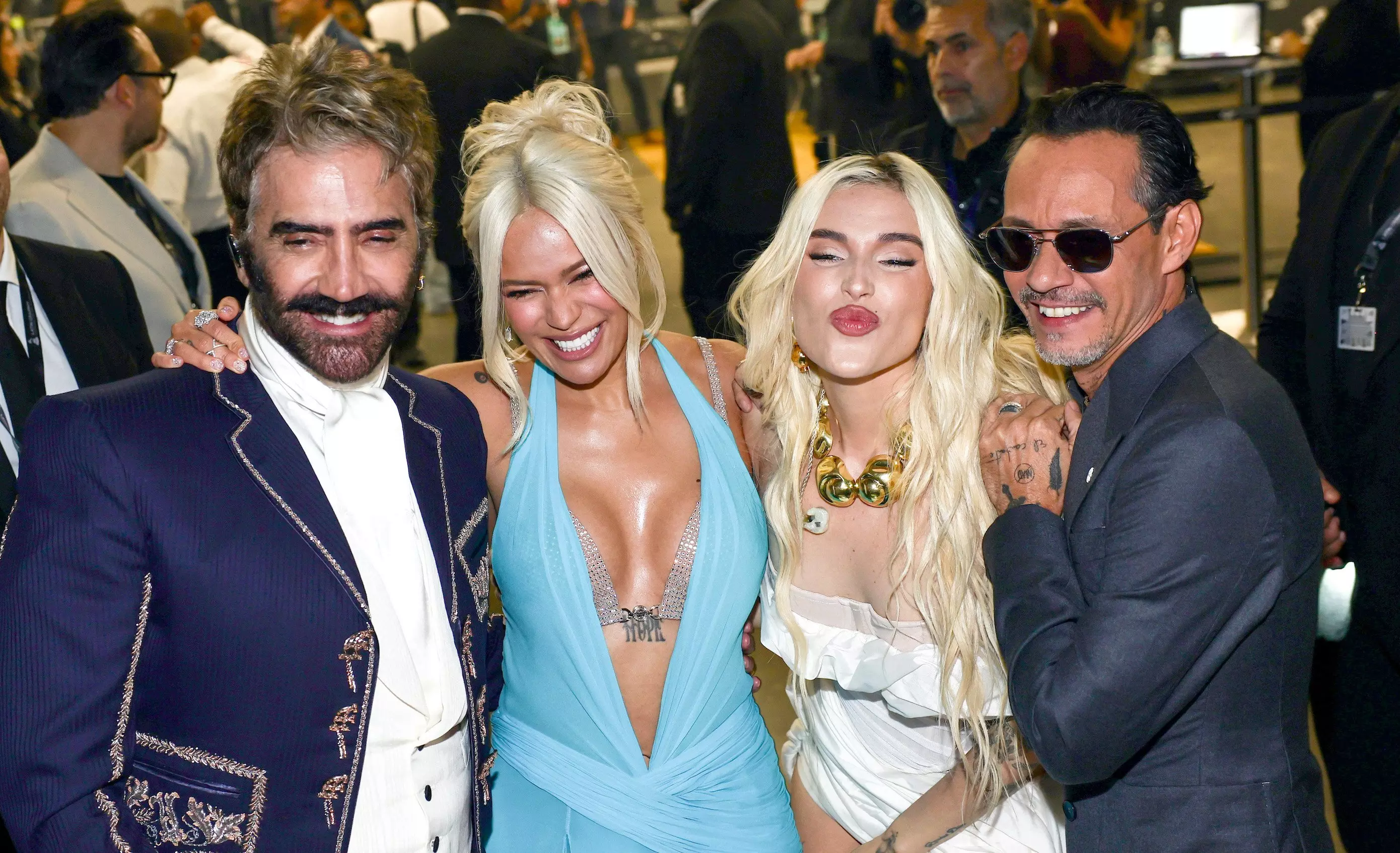
10 Meaningful Moments From The 2024 Latin GRAMMYs: Karol G's Heartfelt Speech, Tributes To Late Legends & More
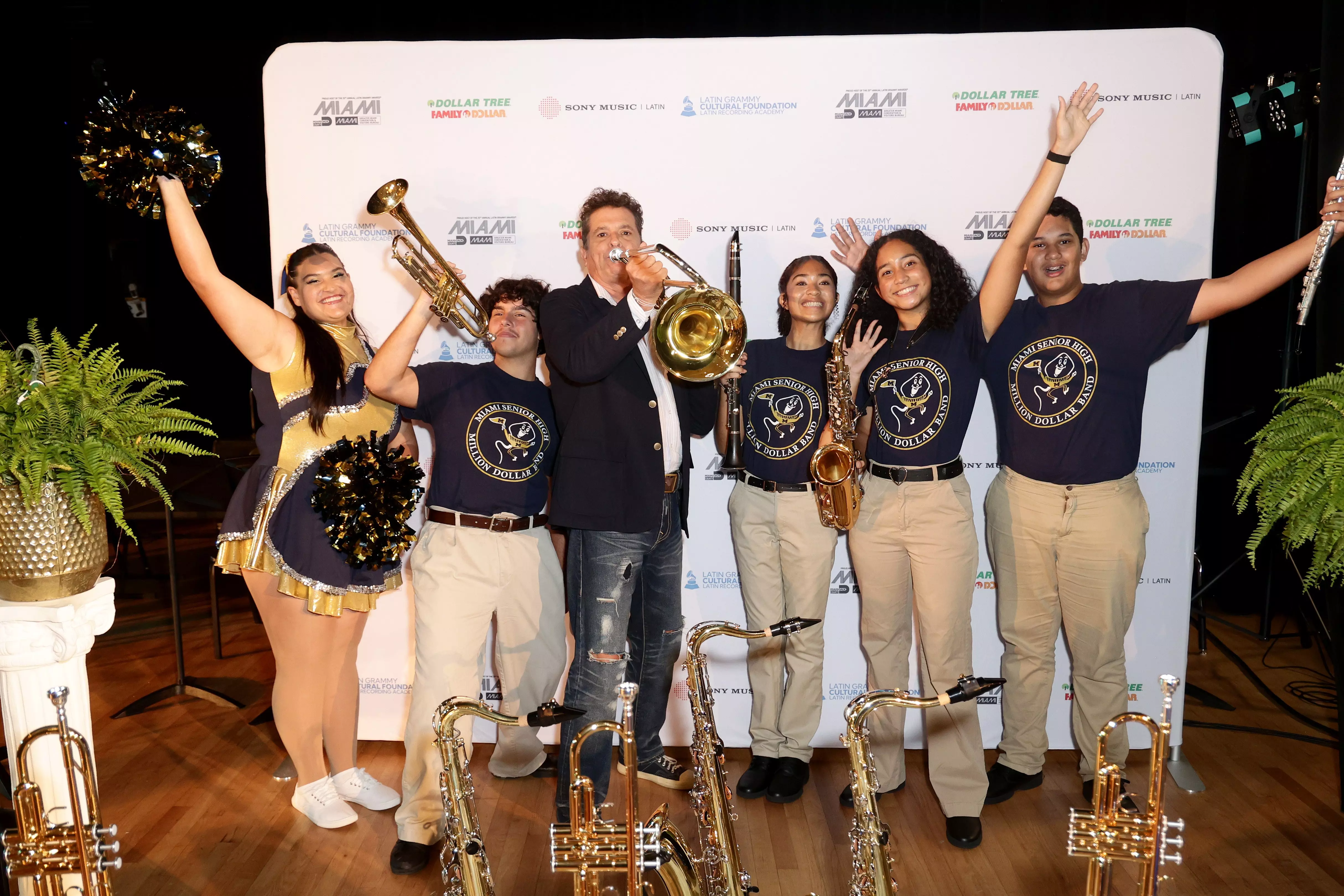
Behind The Scenes At Latin GRAMMY Week 2024: Inside VIP Celebrations & More

Juan Luis Guerra Sweeps The 2024 Latin GRAMMYs With 'Radio Güira'

Watch: Luis Fonsi Performs "Despacito" & Two More Of His Classics At The 2024 Latin GRAMMYs

Watch: Juan Luis Guerra 4.40 Wins Album Of The Year For 'Radio Güira' | 2024 Latin GRAMMYs

Graphic courtesy of the Latin Recording Academy
news
More Performers & Artists Announced For The 2024 Latin GRAMMYs: Juanes, Gloria Estefan, Rauw Alejandro, Mon Laferte, Nathy Peluso, Alejandro Sanz, Julieta Venegas & Many More
Marc Anthony will present a special salsa segment, and Andy García and Roselyn Sánchez will also return to showcase iconic moments from the last 25 years of the Latin GRAMMYs.
The Latin Recording Academy today announced additional performers and special artist presentations for the upcoming 2024 Latin GRAMMYs, which take place Thursday, Nov. 14, live in Miami: Current nominees Pepe Aguilar, Chiquis, Goyo, Mon Laferte, Nathy Peluso, and Rauw Alejandro, as well as previous Latin GRAMMY nominees Alejandro Sanz, Gloria Estefan, Juanes, and Julieta Venegas, have been added.
Additionally, salsa music icon Marc Anthony will executive-produce a special salsa segment during the 2024 Latin GRAMMYs, with musical direction from Sergio George.
GRAMMY winner Andy García and Latin GRAMMY nominee Roselyn Sánchez will also return to showcase iconic moments from the last 25 years of the Latin GRAMMYs and celebrate this milestone with the Latin Recording Academy.
Read More: 2024 Latin GRAMMYs: See The Full Nominations List
Previously announced performers and artists also include Ángela Aguilar, Leonardo Aguilar, Christian Alicea, Anitta, Edgar Barrera, Becky G, David Bisbal, Jon Bon Jovi, Eladio Carrión, DARUMAS, Oscar D’León, Álvaro Díaz, DJ Khaled, Emilia, Alejandro Fernández, Luis Figueroa, Luis Fonsi, Leonel García, Grupo Frontera, Grupo Niche, Juan Luis Guerra, Tiago Iorc, Joe Jonas, Carín León, Tito Nieves, Danny Ocean, Pitbull, Quevedo, Reik, Carlos Rivera, Elena Rose, Ela Taubert, The Warning, Myke Towers, Trueno, and Kali Uchis, as well as the 2024 Latin Recording Academy Person of the Year, Carlos Vives.
Pepe Aguilar is nominated for Best Ranchero/Mariachi Album, and Chiquis received a nomination for Best Banda Album. Goyo earned a nomination for Best Alternative Song, while Mon Laferte received three nominations including Record Of The Year and Album Of The Year. Marc Anthony has two nominations for Best Salsa Album and Best Short Form Music Video, and Nathy Peluso is nominated in three categories including Best Rap/Hip Hop Song, Best Alternative Song and Best Long Form Music Video. Rauw Alejandro received a nomination for Best Reggaeton Performance.
The 2024 Latin GRAMMYs, officially known as the 25th Latin GRAMMY Awards, marks the 25th anniversary of the Latin GRAMMY Awards, a massive milestone for both the Latin Recording Academy and the Latin GRAMMY Awards, and a return to Miami. The 2024 Latin GRAMMYs will debut two new Latin GRAMMY categories: Best Latin Electronic Music Performance and Best Contemporary Mexican Music Album.
Ahead of the 2024 Latin GRAMMYs, the Latin Recording Academy will host the official Latin GRAMMY Week 2024, a weeklong celebration comprising multiple events throughout Miami-Dade County. Marquee events at Latin GRAMMY Week 2024 include Leading Ladies of Entertainment; the Best New Artist Showcase; Special Awards Presentation; Nominee Reception; the Latin Recording Academy Person of The Year gala honoring 18-time Latin GRAMMY winner and two-time GRAMMY winner Carlos Vives; and the Latin GRAMMY Premiere preceding the 2024 Latin GRAMMYs telecast in which the majority of the night's awards will be awarded.
Additionally, the Latin Recording Academy is celebrating the 25th anniversary of the Latin GRAMMYs via a series of exhibits throughout 2024 held at the Paley Museum in New York City, the GRAMMY Museum in Los Angeles, and the Gary Nader Art Centre in Miami. Enrique "Kike" Congrains, who was recently announced as the 2024 Latin GRAMMYs official artist, is currently displaying his work at the exhibit hosted at Miami's Gary Nader Art Centre.
Learn more about how the Latin GRAMMYs have honored and elevated Latin music and its creators across the past 25 years and listen to the 25 songs that have defined the Latin GRAMMYs. For more information about the 2024 Latin GRAMMYs, read this year's official program book and shop the Latin GRAMMY 25th anniversary merchandise collection.
The 2024 Latin GRAMMYs take place Thursday, Nov. 14, and will air live from the Kaseya Center in Miami. The three-hour telecast, produced by TelevisaUnivision, will air live on Univision, UniMás, Galavisión, and ViX beginning at 8 p.m. ET/PT (7 p.m. CT), preceded by a one-hour pre-show starting at 7 p.m. ET/PT.
Latest In Latin Music, News & Videos

10 Meaningful Moments From The 2024 Latin GRAMMYs: Karol G's Heartfelt Speech, Tributes To Late Legends & More

Behind The Scenes At Latin GRAMMY Week 2024: Inside VIP Celebrations & More

Juan Luis Guerra Sweeps The 2024 Latin GRAMMYs With 'Radio Güira'

Watch: Luis Fonsi Performs "Despacito" & Two More Of His Classics At The 2024 Latin GRAMMYs

Watch: Juan Luis Guerra 4.40 Wins Album Of The Year For 'Radio Güira' | 2024 Latin GRAMMYs

Photo: Xavier Scott Marshall
interview
How Ravyn Lenae Found Comfort In Changing Perspective
"I really wanted to give people a glimpse into my life," Lenae says of her new album, 'Bird’s Eye.' The singer/songwriter discusses taking the right risks, and the song that helped repair her relationship with her father.
With massive crowds and countless critics raving about her debut album, Ravyn Lenae knew what she had to do: completely ignore all of the expectations that led to it.
"I knew in order for me to keep evolving as an artist and a person, there was no choice but to let those boundaries go,"she says from her home in Los Angeles.
After building up a growing following in Chicago alongside other members of the Zero Fatigue Collective (which includes producer Monte Booker and rapper Smino), Lenae relocated to the West Coast. She made a massive mark on 2022’s Hypnos, which featured a beguiling mix of alt R&B, house and soul alongside Renae’s magnetic vocal presence.
And rather than coast, Lenae dug deeper for the followup, Bird’s Eye (due Aug. 9). Working with frequent Kendrick Lamar collaborator and in-demand producer DJ Dahi, Bird’s Eye flutters across genres and influences — pulling from Fleetwood Mac on one track, drawing in Childish Gambino on another, and adding Jimmy Jam’s bass elsewhere. Indicative of these multifarious influences are two pre-release singles: the retro pop-leaning "Love Me Not" and the soulfully skipping "Love Is Blind."
Lenae uses that shapeshifting methodology as a way to interrogate the concepts of love and relationships — never content to rest on her laurels, learning how best to grow and adapt. "Making the songs and getting to the bottom of what they meant for me was me kind of retracing my steps a little bit and really acknowledging all these moments in my life, in my childhood, that were pivotal for me and my identity," she says.
Nearing the release of Bird’s Eye, Lenae spoke with GRAMMY.com about directing the video for "Love Me Not" in Chicago, blending Brazilian music with Prince inflections, and how the album helped her reconnect with her father.
A lot seems to have happened in the two years since 'Hypnos.' On a month-to-month, day-to-day basis, how much do you shift creatively?
It feels like night and day to me, even though it's been a really short amount of time. During this time between Hypnos and this album — the recording and creating process — a lot unlocked with me. [There was] a lot of personal growth that happened that allows me to approach music in a much freer and kind of impulsive way.
With the last album and that process, I think I did place a lot of parameters around what I had to be, what I had to sound like, what it had to feel like, who I had to connect with. And I kind of just released all of those expectations with this and made music that I wanted to hear.
How easy was it to actually release those boundaries and work more more in the moment?
I knew in order for me to keep evolving as an artist and a person, there was no choice but to let those boundaries go, if I wanted to keep pursuing music in a way that felt honest. And then being able to collaborate with people such as Dahi, who has kind of mastered that in a lot of ways, and learning from him and seeing his process, seeing how easy and natural it is to just fall into what feels right…
I think the longer you're in an industry or you're in something, the more rules you place on [creativity] and the more you overthink it and try to mold it in a way that doesn't feel impactful. As an artist, being around him and him encouraging that type of process, I think that was a lot of it, too.
Dahi's worked with some incredible artists, and clearly in a way that accentuates that artist rather than making it about DJ Dahi. That must have been so perfectly aligned with your openness, to go in and let yourself learn what you wanted to do. They always say if you know too much and plan everything out, you’ll end up stifled creatively.
It's so true. And that's why I describe it as me kind of returning back to that 12-year-old me, that 13-year-old me, before I cared about opinions, what people thought about me and what I was doing, what I was wearing. I think we start off that way, and then the older we get, the more we get so self-conscious and we judge ourselves more harshly than everyone else.
Why do we do that?!
[Laughs.] I think it's just human nature. And then we try to unlearn all of it.
Even just in daily life, it's so hard to not think about what I could have done at any given moment. And when you’re creating music, there are 5 million ways you can create the same idea and you have to just land on that one.
A hundred percent. During this process, we would have a song idea and then three different versions of that song that hit completely different feelings — maybe a more soft rock version of it, maybe a more indie version of it, maybe a more soulful version. Then it was about having to settle into what is "the one" and what feels the best, versus like what's going to chart or what's going to get in the club. Having to release all of that and just really lean into what feels good is what works every time.
That relates even to how the album was announced, with two tracks that almost speak in conversation with one another. Those songs balance such clever hooks with more nuanced conversation about how conflicted and complex love and relationships can be. How did you find that balance between emotional realism and such immediate music?
It was just really feeling empowered and confident in my decision making. And that's something that's developed over time, too. Really listening to my voice and what I want out of music in my career and my rollout, you know?
Listening to that, obviously having people around me who are like-minded in that way like my management and my team. We all kind of empowered each other to lean into those feelings. At no point in this process did anything feel forced or like I was reaching for something.
That’s so interesting. You want your team to feel supportive but you also want to feel empowered to take risks away from that support. And that reminds me of “Love Me Not,” which has some really smart risks. It's that vintage pop feeling, right down to the clap-along beats, and the vocals feel right in your ear. So when you started working on that track, for example, did you always imagine it being that nostalgia, that warmth?
I thought that there was just something so cool and timeless, a classic feeling about it. And my songs are the ones where you can really pinpoint what the influences are, or when this was made, or the person behind it. Having a song like that, that really reminded me of Outkast. Like, What is this?
Even before it dropped, I remember having some anxiety around maybe my fans not liking it because it feels a little different from Hypnos. I think anytime you kind of jump outside of the bubble you've kind of created, it's scary because there are people living in that bubble with you who like the temperature in there.
It’s so important to be constantly revitalized in your work. If you’re doing the same thing, even if your fans are demanding it, you’re not going to get that. And hopefully when your fans see all that you can do, they’ll follow it.
Yeah. And there's so much left in me to explore into and put out into the world. And look at an artist's career, someone like Tyler, the Creator: Seeing where his sound started and how he's almost trained his fans’ ears to be receptive to something new every time. They've completely grown up with him in a lot of ways and expanded their palate. Kind of forcing the hand of listeners is something that's really interesting to me. [Laughs.]
I love that idea of pushing yourself and pushing your fans, but still within the realm of what's good. [Laughs] Not just experimenting for the sake of it. Speaking of growing and experimenting, I wanted to ask about the “Love Me Not” music video that you directed. It feels so well shot but still so intimate and casual.
I knew with the album and how I wanted the imagery to feel, it would be very homey. Making the songs and getting to the bottom of what they meant for me was me kind of retracing my steps a little bit and really acknowledging all these moments in my life, in my childhood, that were pivotal for me and my identity, those first moments where I felt like I was getting closer to myself in a way.
A lot of that started on the South side of Chicago, at my grandmother's house, in the basement. Even the cover of the album symbolizes that transition for me. That's where I dyed my hair red for the first time in the basement, in the sink, so coming back to the sink and dyeing my hair ginger on the cover was something that felt so powerful and defining for me. It just made perfect sense that we were going to go back to Chicago for the first video, in my grandmother's house, with all my family members involved. Those are my grandparents, my mom, my sisters, so that's why it feels so loose and candid. I really wanted to give people a glimpse into my life and what it felt like walking into my childhood home.
Getting to see a place through someone else’s eyes is so extraordinary. It really makes the little details pop. For example, the plantains cooking on the stove at the beginning.
Yeah. I associate plantains with my grandparents, my family. We’re of Panamanian West Indian descent, so those smells and those sounds, I really wanted to incorporate into the video.
That really speaks to bringing some comfort along with the risk-taking, same as having your family around. The features do a great job of bolstering you, setting up that stability, particularly Ty Dolla $ign on "Dreamgirl."
I think we just had the idea to kind of take the song into a different world in a way. When we first started the first section of the song, I just knew there was magic there. Those Prince drums and that Brazilian guitar — why do those make sense together? It shouldn't ever make sense together. But when I heard it? Oh my god, this feels like something fresh and new, but also like I've felt this feeling before.
Dahi's brain is just incredible, and then even bringing in Jimmy Jam on it to do bass was a dream come true. I knew it kind of felt like it existed in that Janet stratosphere, and I thought it would be such a cool touch for him to do that personally. Dream come true on all spectrums. I love Ty Dolla $ign, obviously grew up listening to him. He's incredible and I was so honored that he wanted to do it.
Besides Janet, were there any particular artists who were kind of central inspirations for this album specifically?
Sonically, Janet is always in the mix. With this one in particular, some Gwen Stefani, No Doubt, a little bit of Fleetwood Mac in there. I just love taking these worlds that are very different from each other and kind of mashing them and seeing what happens. It's like my favorite thing ever.
You’re trained in classical music, and it's so clear that you understand the range of emotion that you can convey. I'm just curious what happened when you went into recording — or even before that, in the writing. What was it like digging into yourself to find the narrative that matched the mashing?
Honestly, I don't think there was much premeditation with the writing and what I wanted to touch on in a way. Really leaning into those impulsive initial first feelings that a song gives me is something I really valued with this album. And moving forward, that'll be my process.
What was premeditated with the writing process with this album was, with every song, trying to really peel back those layers in my brain and those barriers lyrically. Like, What would I naturally say? Think of that and then think, Okay, how can I make this even more literal, even more personal? Even in working with my girl [songwriter] Sarah Aarons, I learned a lot from her as far as songwriting and how to really paint a picture that feels clear and concise and emotional. Not trying to find the prettiest words or the most interesting words, but really writing what feels real. And that's something that I've really, really valued and learned with this process.
Even with “One Wish” with Childish Gambino, the whole album feels like this big conversation on relationships. Being more direct feels like some advice someone would get with a relationship itself, let alone writing about it. Did that process help you actually process what was happening in your life too?
Oh man, 100 percent. And that's why music is so beautiful to me. It's really a means of opening dialogue between me and myself, and then me and the people in my life. With a song that's so important to me like “One Wish," it’s not just because it's a great song, but because this has really catapulted me into this different part of my life and repairing relationships, opening up difficult conversations — like with my father in particular. Hearing such a simple song and the response I've gotten from it has only validated me much more in the fact that these real stories, real emotions are what connects.
Have you played the album for your father?
We started repairing or rekindling our relationship maybe two years ago. The making of Bird’s Eye was at its peak and I felt like it was important for me to have a song on the album that addressed my relationship with him in order for me to release it and start to move on in a positive way.
So sharing the song with him, inviting him to be in the music video was huge for us. And then even after debriefing about maybe some feelings that came up when he heard certain lyrics or when he saw certain scenes in the video, it just opened up this really honest, candid dialogue between us and I couldn't be more grateful that I have this outlet.
More R&B News

Photo: Mick Hutson/Redferns
list
When The GRAMMYs & Olympics Align: 7 Times Music's Biggest Night Met Global Sports Glory
Before the Olympic Games begin in Paris on July 26, dive into the intertwined history of gold medalists and golden gramophones.
The GRAMMY Awards and the Summer Olympics are unarguably the pinnacles of their respective fields. Indeed, most recording artists dream of making an acceptance speech for their magnum opus during the biggest night on the music industry calendar, while athletes competing in any of the Games’ 32 different disciplines are continually motivated by the lure of the podium.
But how often have the two intertwined since the first GRAMMY ceremony took place a year before Rome 1960?
Well, perhaps more than you think. Sure, the musical efforts from basketballers Shaquille O’Neal (gold at Atlanta 1996), Kobe Bryant (gold at Beijing 2008 and London 2012), and Damian Lillard (gold at Tokyo 2020) might not have registered with the Recording Academy. Likewise, those from track and field hero Carl Lewis (nine golds and one silver from four consecutive Games), light middleweight boxer Roy Jones Jr. (silver at Seoul 1988), and near-superhuman sprinter Usain Bolt (eight golds from Beijing, London, and Rio 2016).
But there are a handful of sportsmen (sadly, not yet sportswomen) who have competed for both gold medals and golden gramophones. There are also pop stars who have attempted to capture the blood, sweat, and tears of the quadrennial spectacle in musical form — whether as an official anthem, television theme, or simply a motivational tool — and been rewarded with GRAMMY recognition for their efforts.
With the Olympics’ return to Paris just around the corner (July 26-Aug.11), what better time to celebrate those occasions when the Games and the GRAMMYs align?
Gloria Estefan & Björk's Themes Pick Up GRAMMY Nods
It seems fair to say that Gloria Estefan, the Cuban hitmaker who helped to bring Latin pop to the masses, and avant-garde eccentric Björk, wouldn't appear to have much in common. They have, however, both received GRAMMY nominations in the Best Female Pop Vocal Performance category for their respective Olympics themes.
Estefan was recognized at the 1997 ceremony for "Reach," the gospel-tinged power ballad that embodied the spirit of the previous year's Atlanta Games. Iceland's finest musical export picked up a nod for "Oceania," the swooping experimental number she co-produced with Warp label founder Mark Bell which helped to soundtrack the opening ceremony of Athens 2004. And both went home empty-handed, the former losing to Toni Braxton's "Un-Break My Heart" and the latter to Norah Jones' "Sunrise."
Whitney Houston's Momentous Live Performance
The incomparable Whitney Houston might not have added to her GRAMMY haul at the 1989 ceremony — Tracy Chapman's "Fast Car" prevented her from converting her sole nod, Best Female Pop Vocal Performance, into a win — but she still stole the show. Houston owned opened the 31st GRAMMY Awards with a performance of "One Moment in Time," the nominated track that had defined NBC's coverage of the Seoul Games.
Co-written by Albert Hammond, produced by Narada Michael Walden and featuring the London Symphony Orchestra, the UK chart-topping single certainly had a first-class pedigree. But it was Houston's lung-busting vocals that made the torch song such a sports montage favorite. The iconic diva once again stirred the emotions on the music industry's biggest night of the year with a rendition that's since become a staple of her many hits collections.
Oscar De La Hoya Swaps Ring For Recording Studio
Shakira fought off some interesting company to win 2001's Best Latin Pop Album GRAMMY. Alongside records from Luis Miguel and Alejandro Sanz, the category also included Christina Aguilera's first Spanish-language affair, and a bilingual effort from champion boxer Oscar De La Hoya.
The American became a national sensation overnight when he won the men's lightweight boxing gold at the 1992 Barcelona Olympics. But despite new material from seasoned hitmaker Diane Warren and a cover of Bee Gees' classic "Run to Me," his 13-track self-titled debut didn't exactly set the charts alight. Despite the GRAMMY nod, De La Hoya hasn't entered the recording studio since.
Muhammad Ali Is Recognized For His Way With Words
But when it comes to GRAMMY-nominated boxers, then the man who famously floated like a butterfly and stung like a bee is undoubtedly the don. Shortly before he changed his name from Cassius Clay to Muhammad Ali, the light heavyweight gold medalist of the 1960 Rome Games was recognized for his amusing repartee in the Best Comedy Performance category. Hailed by some as a progenitor of the rap artform, I Am the Greatest lost out to a man slightly different in stature: portly parodist Allan Sherman.
And the sporting icon also had to experience another rare defeat 13 years later when his reading of The Adventures Of Ali And His Gang Vs. Mr. Tooth Decay lost out to Hermione Gingold & Karl Böhm's Prokofiev: Peter and the Wolf/Saint-Saëns: Carnival of the Animals in 1977’s Best Recording for Children.
John Williams' Winning Olympic Fanfare
Legendary composer John Williams is one of the most-nominated artists in GRAMMY history having amassed 76 nods since his work on detective series "Checkmate" was recognized in Best Score Soundtrack for Visual Media in 1962. Two of his wins in this remarkable tally have been Games-related.
In 1985, Williams won Best Instrumental Composition for "Olympic Fanfare and Theme," which he wrote and arranged for the Los Angeles Games the year prior. In 1989, the conductor received a nod in the same category for "Olympic Spirit," another majestic instrumental produced for NBC’s coverage of Seoul '88.
Interestingly, Wiliams isn't a particularly avid sports fan, but as he told The New York Times, he can still relate to those going for gold. "The human spirit stretching to prove itself is also typical of what musicians attempt to achieve in a symphonic effort."
Magic Johnson’s Educational Guide Wins Best Spoken Word Album
Basketball appears to produce more aspiring musicians than any sport. Marvin Bagley III, Lonzo Ball, and Brandon Clarke are just a few of the NBA names to have released albums in the last few years. But the only time a hooper has been recognized at the GRAMMYs is for an audiobook.
The year before guiding Team USA to the men's basketball gold at Barcelona 1992, Magic Johnson had bravely revealed that he'd contracted HIV, defying the stigma that surrounded it at the time. The year after his Olympic triumph, the iconic shooting guard was honored for joining the fight against the disease. Johnson won the Best Spoken Word or Non-Musical Album GRAMMY for What You Can Do To Avoid AIDS, a compassionate guide designed to educate the youth of America whose proceeds went to the sportsman's eponymous foundation.
Chariots Of Fire Is Nominated For Record Of The Year
Based on the real-life exploits of British runners Harold Abrahams and Eric Liddell at the 1924 Paris Olympics, period drama Chariots of Fire won Best Picture at the 1982 Oscars. But it’s the titular number from Vangelis' anachronistic synth-based score that remains its crowning glory.
First played as the aspiring Olympians train beachside in the slow-motion opening flashback, the instrumental not only topped the Billboard Hot 100, it also picked up a GRAMMY nod for Record of the Year. "Chariots of Fire" has since become synonymous with the more modern iteration of the Games, appearing in the BBC's coverage of Seoul '88, gracing the start of the men's 100m final at Atlanta '96, and perhaps most famously of all, being performed at London 2012's opening ceremony by none other than Rowan Atkinson's rubber-faced buffoon Mr. Bean.
Read more: 10 Essential Vangelis Albums: Remembering The Electronic Music Pioneer
Latest News & Exclusive Videos
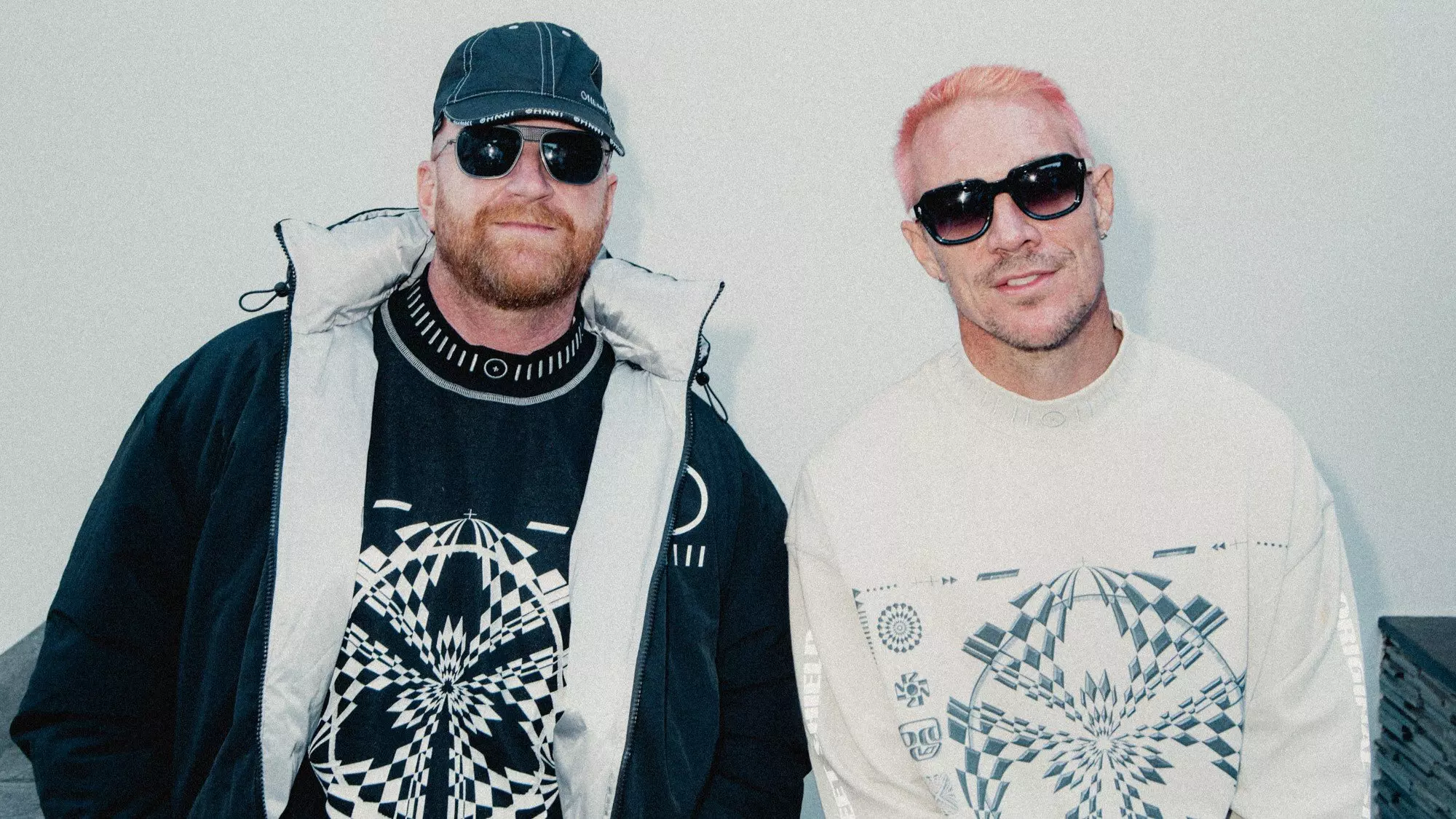
How Major Lazer's 'Guns Don't Kill People…Lazers Do' Brought Dancehall To The Global Dance Floor

YOASOBI Performs "Idol" | Global Spin
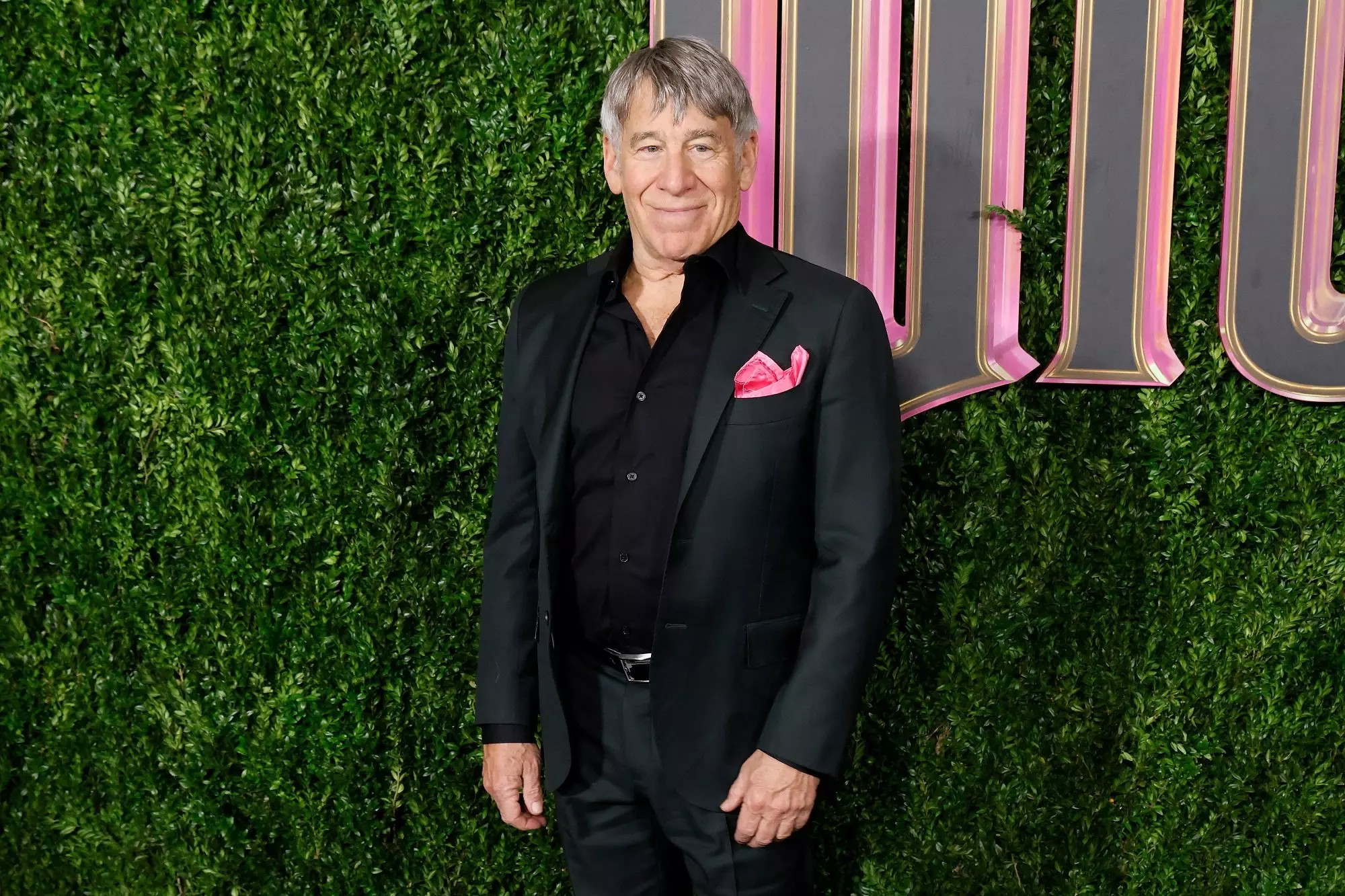
'Wicked' Composer Stephen Schwartz Details His Journey Down The Yellow Brick Road
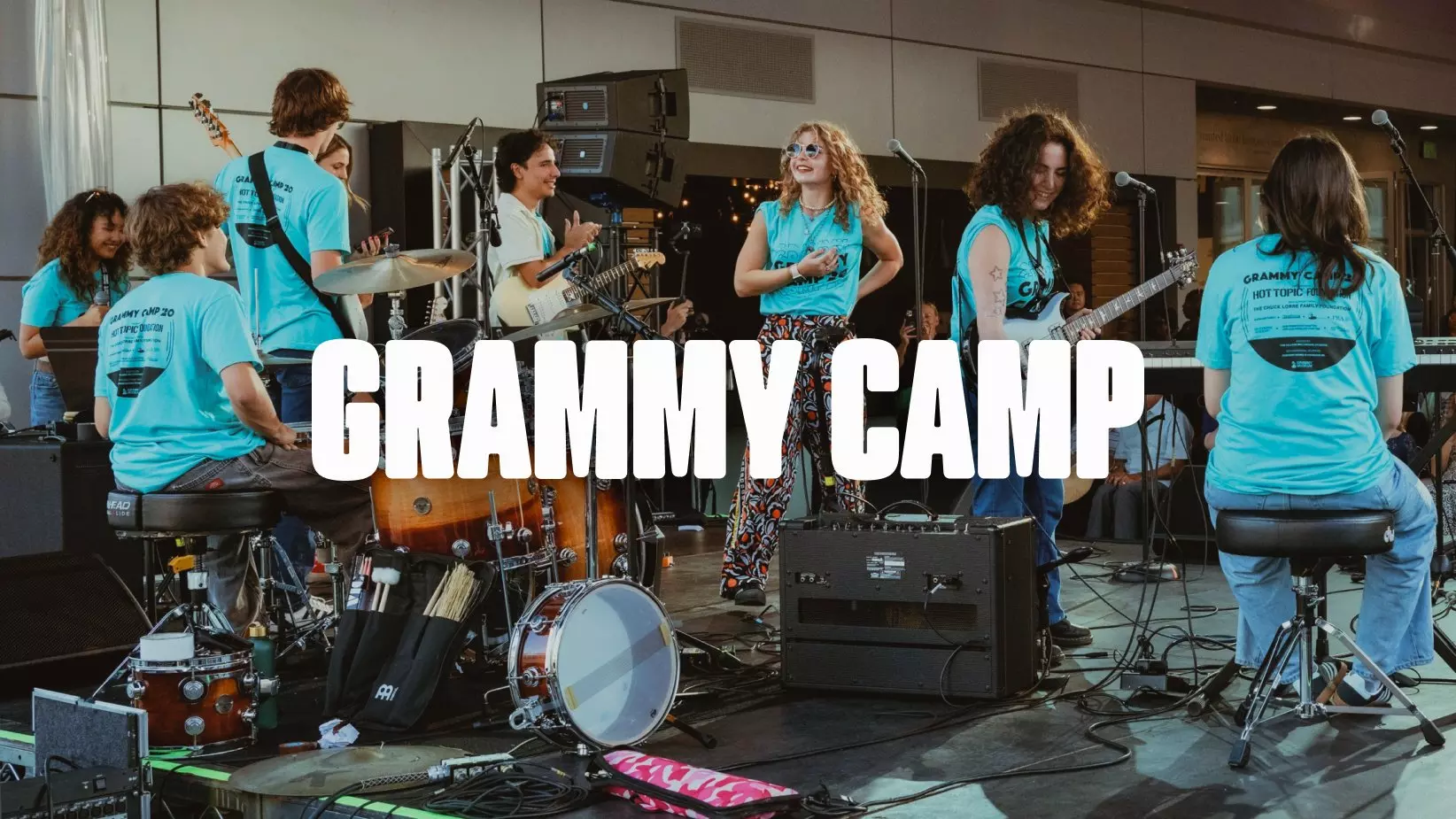
GRAMMY Museum Expands GRAMMY Camp To New York & Miami For Summer 2025
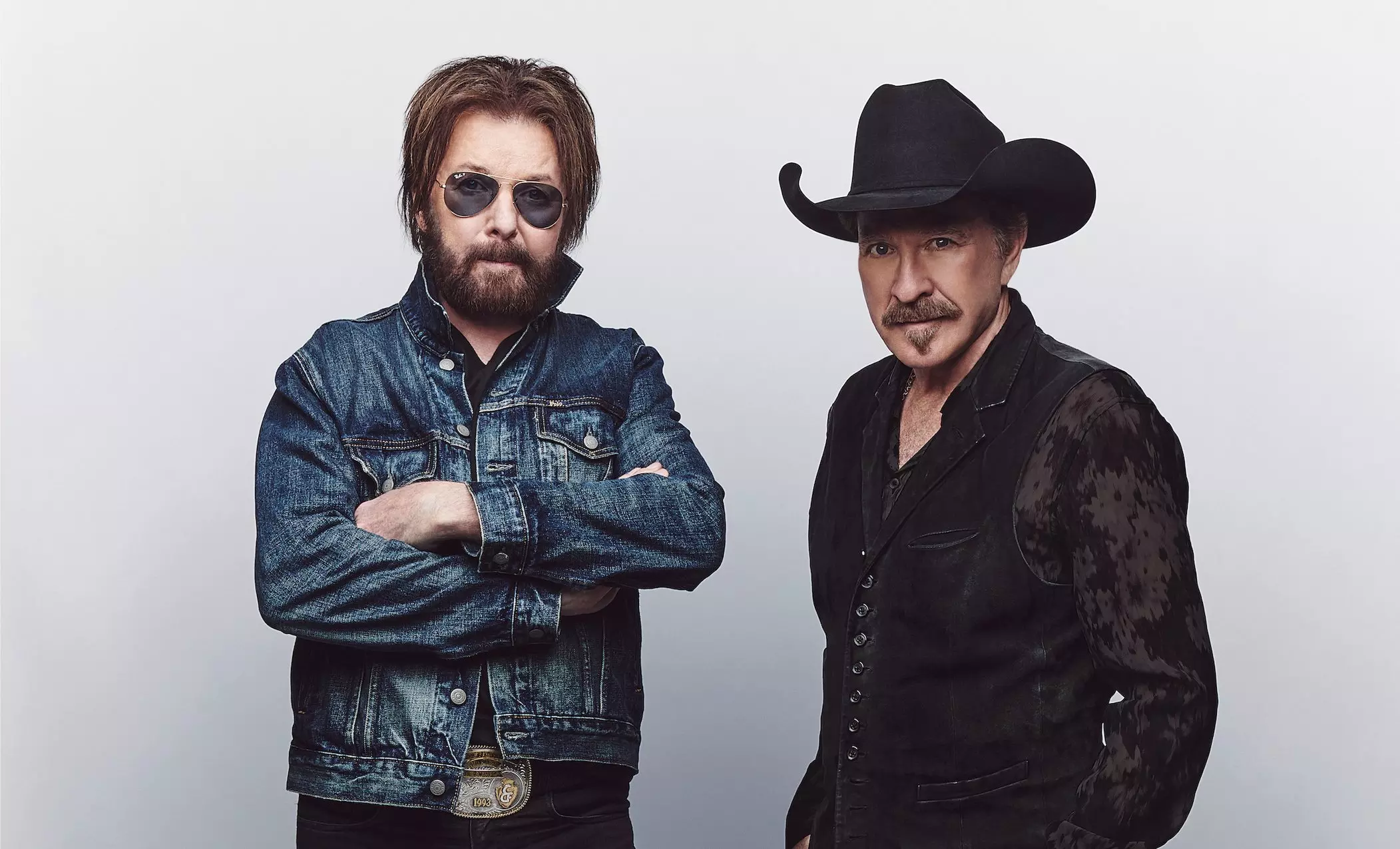
Living Legends: Brooks & Dunn On How 'Reboot II' Is A Continuation Of "Winging It From Day One"




